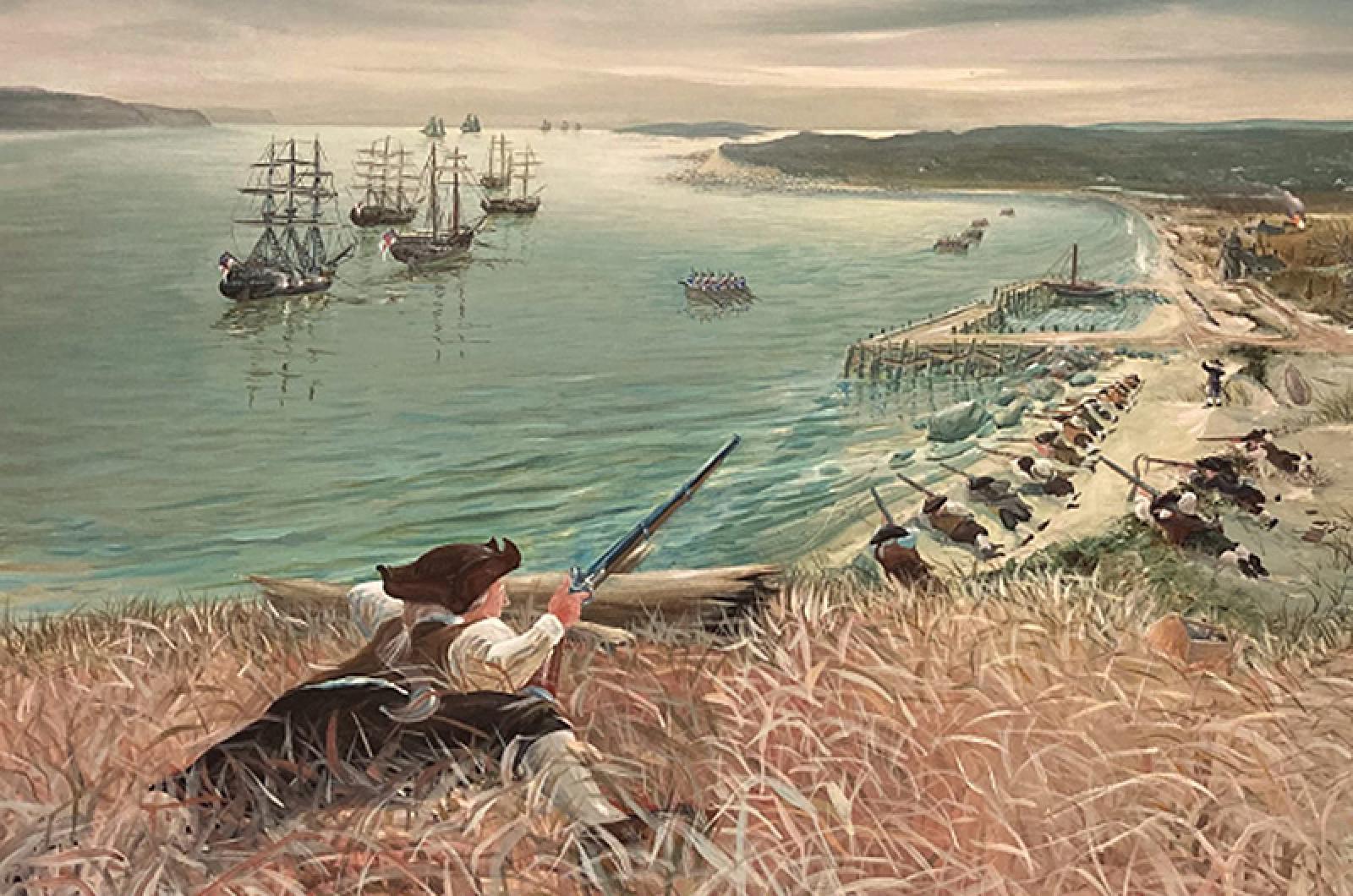Martha’s Vineyard in the American Revolution by Thomas Dresser, The History Press, 2021, 158 pages, $21.99.
As Thomas Dresser points out at the beginning of his new book, Martha’s Vineyard in the American Revolution, islands occupy a precarious position in both peacetime and war. Islands are exposed on all sides, vulnerable to invasion, and more dependent on imports than mainland towns surrounded by farmland. If a war breaks out that involves the greatest navy in the world, islands are going to feel it in a sharp way.
This was certainly true of Martha’s Vineyard, which was a bustling hub of maritime trade and commerce on the eve of the Revolution. This gave Vineyarders what Mr. Dresser calls a “unique perspective” on the growing hostilities between the colonies and the British Empire.
“Living on an island necessitated dependence on ocean vessels to provide protection, support, supplies, trade or escape,” he writes.
And the Vineyard has more associations with the American Revolution than most readers might think, starting with the phrase every American school child knows: no taxation without representation — which was popularized by Jonathan Mayhew, who was born on Tisbury Great Pond in 1720.
It is also likely that the Vineyard saw the first armed naval confrontation of the entire war. The British merchant ship HMS Harriot, anchored in harbor at Edgartown, was attacked by the much-smaller sloop Liberty under the command of Capt. Benjamin Smith and plundered, much to the dismay of the Harriot’s captain, who wrote a letter of complaint to George Washington demanding both his freedom and his wardrobe chest.
Did the captain actually send the letter? What appears to be the original is currently in the Martha’s Vineyard Museum, and Mr. Dresser notes “How it got there is unknown.”
As far as we know, the Harriot’s captain never got his waistcoats back, but such are the tragedies of warfare.
And of course there’s the famous — or is it infamous? — Liberty Pole. Conscientious historian that he is, Mr. Dresser knows he can’t ignore it. Quite the opposite: he’s obligated to weigh in on this persistent but oft-dismissed story. The tale is told of how in 1775 the townspeople of Holmes Hole, out of patriotic fervor, erected a tall pole to symbolize their enthusiasm for the revolutionary cause. In 1778 a British ship captain in need of a new mast for his vessel wanted to buy the pole and put it to use. In the dead of night, three young Vineyard women — Polly Daggett, Parnell Manter and Maria Allen, bored holes in the pole, stuffed the holes with gunpowder, and blew the thing to smithereens. Although the story has been doubted for centuries, Mr. Dresser has no doubt on the subject: “It is not myth,” he writes. “It is not fable.”
Undoubtedly the most significant intrusion of the war into the everyday lives of the Island’s farmers, fishermen and traders was Grey’s Raid, which occurred in September of 1778.
Mr. Dresser gives a concise account of the tangled preliminaries, but the raid itself was as blunt and straightforward as a club to the face. General Grey sailed into Holmes Hole Harbor with a fleet of 47 ships and more than 4,000 troops and requisitioned all the Island’s small arms, all its ready money, 300 oxen, and 10,000 sheep. The Island’s citizens complied (with the exception of a feisty old woman who refused to surrender “Josey’s Pig”).
General Grey eventually sailed away, and so concluded what Mr. Dresser refers to as “the last effort by the British to control New England.”
So too largely concluded the Vineyard’s direct involvement in the Revolution. Events like the Battle of Falmouth in 1779 happened on the Island’s doorstep, a mere seven miles away, but Grey’s Raid was the only time the British boot was put directly on the Island’s neck. After that, the fighting was done elsewhere — although Vineyarders played prominent parts, as Mr. Dresser demonstrates in a series of individual portraits at the close of his book.
And in case you’re wondering, in Vineyard Haven today stands a replica of the Liberty Pole those Vineyard women blew up.
“The Liberty Pole ladies make Islanders proud of their heritage,” Mr. Dresser notes.




Comments (1)
Comments
Comment policy »